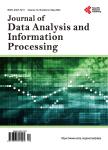Predicting Wavelet-Transformed Stock Prices Using a Vanishing Gradient Resilient Optimized Gated Recurrent Unit with a Time Lag
Predicting Wavelet-Transformed Stock Prices Using a Vanishing Gradient Resilient Optimized Gated Recurrent Unit with a Time Lag作者机构:Department of Mathematics Institute for Basic Sciences Technology and Innovation The Pan African University Nairobi Kenya Department of Statistics and Actuarial Sciences Dedan Kimathi University of Technology Nyeri Kenya Department of Computing School of Computing and Information Technology Jomo Kenyatta University of Agriculture and Technology Nairobi Kenya
出 版 物:《Journal of Data Analysis and Information Processing》 (数据分析和信息处理(英文))
年 卷 期:2023年第11卷第1期
页 面:49-68页
主 题:Optimized Gated Recurrent Unit Approximation Coefficient Stationary Wavelet Transform Activation Function Time Lag
摘 要:The development of accurate prediction models continues to be highly beneficial in myriad disciplines. Deep learning models have performed well in stock price prediction and give high accuracy. However, these models are largely affected by the vanishing gradient problem escalated by some activation functions. This study proposes the use of the Vanishing Gradient Resilient Optimized Gated Recurrent Unit (OGRU) model with a scaled mean Approximation Coefficient (AC) time lag which should counter slow convergence, vanishing gradient and large error metrics. This study employed the Rectified Linear Unit (ReLU), Hyperbolic Tangent (Tanh), Sigmoid and Exponential Linear Unit (ELU) activation functions. Real-life datasets including the daily Apple and 5-minute Netflix closing stock prices were used, and they were decomposed using the Stationary Wavelet Transform (SWT). The decomposed series formed a decomposed data model which was compared to an undecomposed data model with similar hyperparameters and different default lags. The Apple daily dataset performed well with a Default_1 lag, using an undecomposed data model and the ReLU, attaining 0.01312, 0.00854 and 3.67 minutes for RMSE, MAE and runtime. The Netflix data performed best with the MeanAC_42 lag, using decomposed data model and the ELU achieving 0.00620, 0.00487 and 3.01 minutes for the same metrics.



